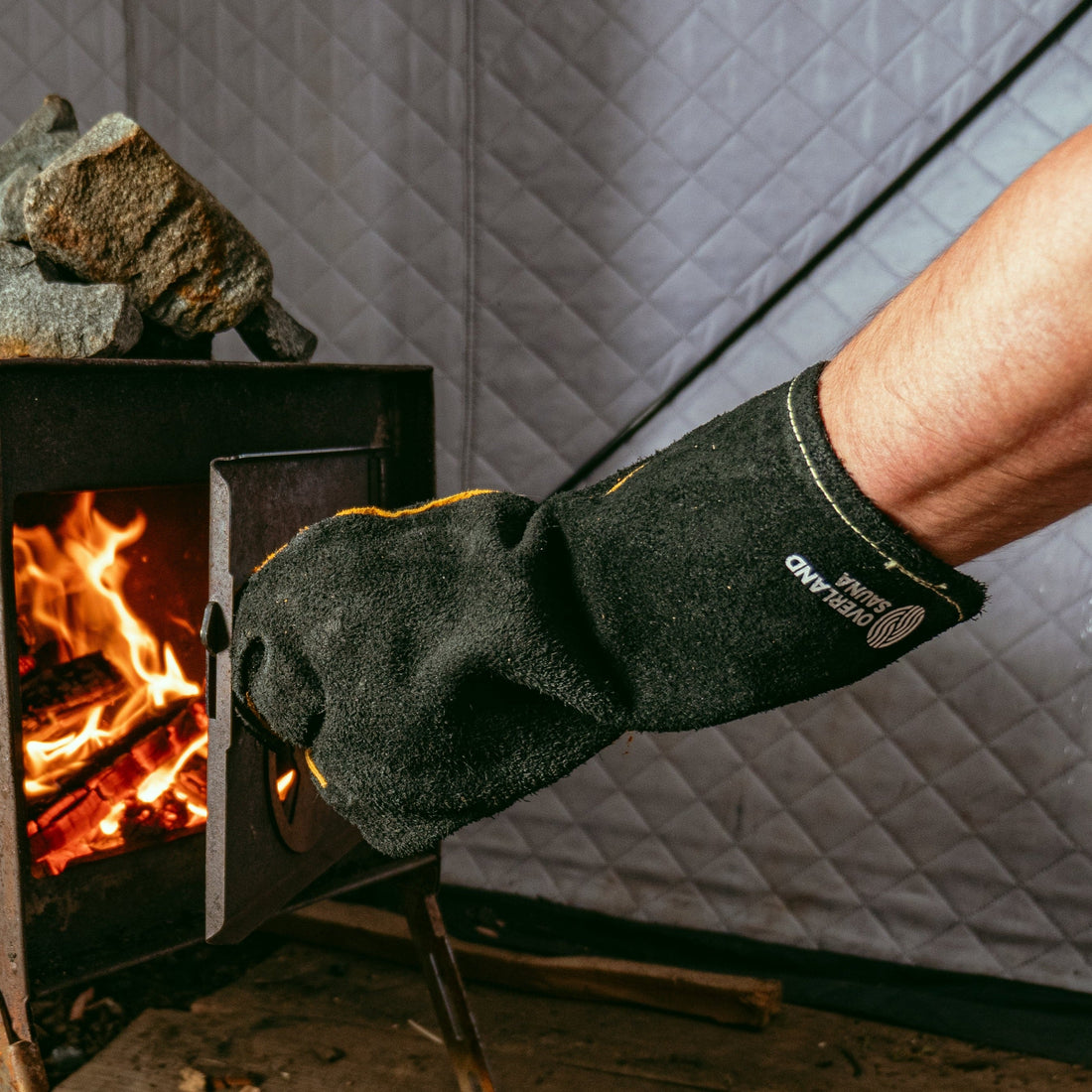The satisfying hiss of water hitting hot stones is one of the most iconic elements of a sauna experience. It signals a rush of heat and humidity, an intensification of the sweat session, and a moment of control over your comfort. But when it comes to sauna tents, many wonder: does the steam response work the same way as it does in traditional saunas?
The answer: Yes, with a few key differences to consider.
Understanding Loyly: The Steam Effect
In both traditional saunas and sauna tents, pouring water over heated rocks creates what’s known as "loyly"—a burst of steam that increases the humidity and intensifies the heat sensation. This process is central to the experience of Finnish-style saunas, where humidity levels are variable and user-controlled.
Whether you're in a log cabin or a canvas tent, the basic principle holds: hot rocks + water = steam.
But how effectively this works depends on the setup.
The Importance of Rock Temperature
Steam is only as good as the heat in the rocks.
-
In traditional saunas, large wood-burning or electric heaters heat a dense mass of rocks to very high temperatures, often upwards of 400°F (204°C).
-
In sauna tents, heat sources are smaller and rely on efficient rock placement and stove design to reach optimal steam-producing temps.
The key is getting the rocks hot enough. If they're not sufficiently heated, pouring water over them won’t result in much steam—just a puddle and a drop in temperature.
How Sauna Tents Are Engineered for Steam
High-quality sauna tents, like those offered by Overland Sauna, are specifically designed to replicate that loyly experience. Here’s how:
-
Purpose-built stoves with side-mounted or top rock cages allow direct heat transfer to the rocks.
-
The rock basket holds up to 80 lbs of sauna stones, allowing them to absorb and retain significant heat.
-
Controlled airflow and stove dampers allow you to fine-tune the burn and heat level, giving the stones time to reach the necessary temperature.
With the right firewood, the right stove, and a bit of fire management skill, sauna tent rocks can absolutely reach temperatures hot enough for powerful steam bursts.
Managing Humidity in a Smaller Space
One important distinction between a sauna tent and a traditional sauna is space. The compact interior of a tent amplifies the effect of steam.
-
Steam spreads faster and saturates the space quickly.
-
You can feel a temperature and humidity shift almost immediately after pouring.
-
But that also means it’s easier to overdo it. A small pour goes a long way.
It takes practice, but many users come to love how responsive a sauna tent is to each splash of water. It's a fast-feedback system that puts you more in control of the atmosphere.
Water Technique Matters More Than You Think
How you pour water onto the rocks influences the experience.
-
Use a ladle: Splashing a measured amount (usually 1-2 ladles) is safer and more effective than dumping a full cup.
-
Aim for the hottest stones: Typically at the center or top of the rock cage.
-
Wait between pours: Allow the steam to disperse before adding more.
-
Use clean water only—no essential oils unless you're using a separate container or oil-safe accessories.
What You Might Miss (and What You Might Prefer)
While sauna tents offer an excellent steam experience, there are a few trade-offs compared to larger, more permanent setups:
-
You won’t have multi-layer benches for varying heat zones.
-
The humidity might feel more intense faster because of the lower ceiling.
-
Heat-up time is faster, but you may need to be more hands-on with fire and ventilation.
That said, many users find the sauna tent experience more immersive and intimate. The sound of crackling wood, the tactile nature of fire management, and the responsiveness of the space all add up to a satisfying, grounded session.
Why It Feels Different (But Still Authentic)
The key takeaway is that a good sauna tent doesn’t try to replicate every element of a brick-and-mortar sauna. Instead, it offers a portable, flexible version of the same core principles.
-
You still get dry heat.
-
You still control your loyly.
-
You still have that meditative sweat experience.
And you can enjoy it in your backyard, at a lakeside campsite, or deep in the woods.
For Best Results: Start With These Tips
If you’re new to using water in a sauna tent, here are some beginner guidelines:
-
Preheat the rocks for at least 20-30 minutes.
-
Use only dry, seasoned hardwood for a hotter, cleaner burn.
-
Open the stove damper to build a strong fire, then adjust as needed.
-
Test with small water pours to gauge how the steam fills the space.
-
Ventilate slightly if it feels overly humid or heavy.
With just a little practice, you’ll quickly develop your own rhythm and preferences.
It All Comes Down to the Rocks
In both traditional and tent saunas, the rocks are the heart of the system. If they’re hot enough, the magic happens. If they’re not, the steam falls flat.
Thankfully, well-designed sauna tents—especially those with dedicated rock cages like the Overland Sauna system—are more than capable of delivering a satisfying, steamy session that rivals their stationary counterparts.
FAQs
Can you use essential oils in a sauna tent?
Not directly on the rocks. Instead, use a separate bowl of water with diluted oil and place it nearby, or use oil-safe sauna accessories.
How much water should you use?
Start with 1-2 ladles at a time. In a tent, that amount can quickly change the feel of the space.
Will pouring water cool the tent down?
If the rocks aren’t hot enough, yes. If they are properly heated, the steam will actually enhance the warmth.
What kind of rocks should be used?
Dense sauna stones like peridotite or olivine are ideal. They hold and radiate heat effectively.
How do I know when the rocks are hot enough?
They should give off a strong hiss and burst of steam when water touches them. If there's no sound or visible steam, give them more time to heat.

